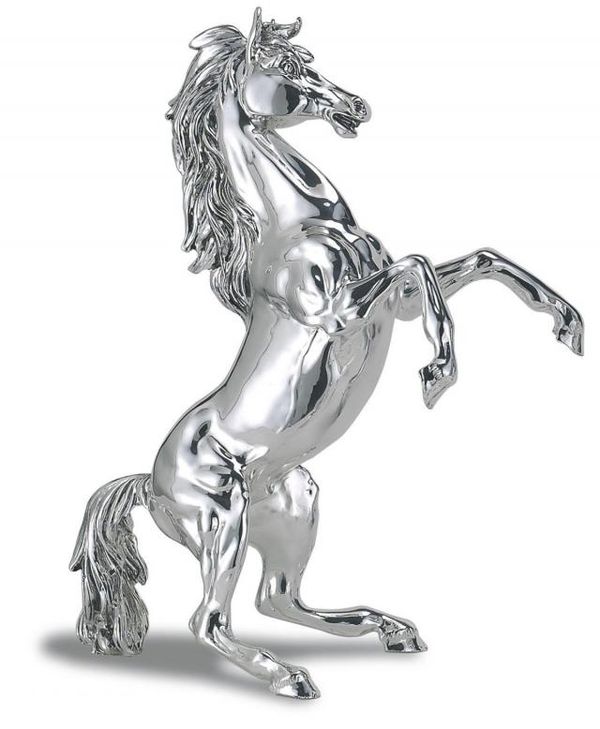|
|
Silver Art
|
Compounds
Silver metal dissolves readily in nitric acid (HNO3) to produce silver nitrate (AgNO3), a transparent crystalline solid that is photosensitive and readily soluble in water. Silver nitrate is used as the starting point for the synthesis of many other silver compounds, as an antiseptic, and as a yellow stain for glass in stained glass. Silver metal does not react with sulfuric acid, which is used in jewelry-making to clean and remove copper oxide firescale from silver articles after silver soldering or annealing. However, silver reacts readily with sulfur or hydrogen sulfide H2S to produce silver sulfide, a dark-colored compound familiar as the tarnish on silver coins and other objects. Silver sulfide also forms silver whiskers when silver electrical contacts are used in an atmosphere rich in hydrogen sulfide.
4 Ag + O2 + 2 H2S → 2 Ag2S + 2 H2O
Silver chloride (AgCl) is precipitated from solutions of silver nitrate in the presence of chloride ions, and the other silver halides used in the manufacture of photographic emulsions are made in the same way, using bromide or iodide salts. Silver chloride is used in glass electrodes for pH testing and potentiometric measurement, and as a transparent cement for glass. Silver iodide has been used in attempts to seed clouds to produce rain. Silver halides are highly insoluble in aqueous solutions and are used in gravimetric analytical methods.
|
|









